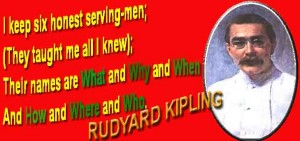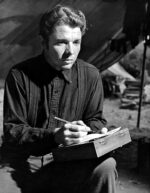 Dealing with a lying witness will happen to every lawyer who tries cases. Francis Wellman in The Art of Cross Examination (1903) discusses the perjured witness.
Dealing with a lying witness will happen to every lawyer who tries cases. Francis Wellman in The Art of Cross Examination (1903) discusses the perjured witness.
In Chapter IV, Wellman points out a false testimony witness may display “in the voice, in a vacant expression of the eyes, [and] in a nervous twisting in the witness chair….” We see these traits in Mayella Violet Ewell in the the movie clip from To Kill A Mockingbird where Gregory Peck presents classic cross examination.
Wellman covers techniques to use on the unsophisticated lying witness. “Try taking the witness to the middle of the story then jump… to the beginning then to the end.” This works because the witness has “no facts with which to associate the wording of her story.” She can “only call to mind as a whole rather than detachments.”
Wellman teaches “[d]raw attention to facts dissociated from the main story as told. [S]he will be entirely unprepared.” (This is seen in the clip when Peck demonstrates Tom’s lame left arm). Then, like Gregpry Peck in our film clip, return to the facts you have called to her attention (Tom’s lame left arm) and ask her the same question again (how did the rape take place given prior testimony).
As we learn from Wellman she cannot invent answers as fast as the questions.”[S]he will…become confused and from that time be at your mercy.” Then Wellman says let her go as soon as you have made it clear her testimony is not mistaken but lying.
As we see in the clip, and as predicted by Wellman, Mayella Ewell, is at the mercy of Atticus Finch. She cracks as Atticus and everyone else watches. This is the ultimate cross examination of a perjured witness.
Post Footer automatically generated by Add Post Footer Plugin for wordpress.


 Years ago I attended a Day With Paul Luvera where the great trial lawyer quoted Rudyard Kipling’s “Six Honest Serving Men” when discussing cross examination. From
Years ago I attended a Day With Paul Luvera where the great trial lawyer quoted Rudyard Kipling’s “Six Honest Serving Men” when discussing cross examination. From  Years ago after a jury trial a juror referred me to Garr Reynolds’
Years ago after a jury trial a juror referred me to Garr Reynolds’  A successful personal injury lawyer must try the case when the insurance company is unreasonable Trial requires performance under stress. For performance at the highest level:
A successful personal injury lawyer must try the case when the insurance company is unreasonable Trial requires performance under stress. For performance at the highest level: “The human energy system is an energetic webbing that permeates the entire body. It is the system that empowers the body and energizes and enlivens the mind, providing the energetic foundation upon which the body is built. It is the network through which all life energy flows.” Kilham, The Five Tibetans (1994) at 10. Kilhan points out we are incarnate beings meaning we are beings who live in bodies.
“The human energy system is an energetic webbing that permeates the entire body. It is the system that empowers the body and energizes and enlivens the mind, providing the energetic foundation upon which the body is built. It is the network through which all life energy flows.” Kilham, The Five Tibetans (1994) at 10. Kilhan points out we are incarnate beings meaning we are beings who live in bodies.
 Aristotle teaches tragedy is the imitation of action in life. Well-being (health) and ill-being (injury) “reside in action” with the goal of life being activity. “People achieve well-being or its opposite on the basis of how they fare.” Poetics (The Primacy of Plot). The “plot” in tragedy concerns the action and how the hero fares.
Aristotle teaches tragedy is the imitation of action in life. Well-being (health) and ill-being (injury) “reside in action” with the goal of life being activity. “People achieve well-being or its opposite on the basis of how they fare.” Poetics (The Primacy of Plot). The “plot” in tragedy concerns the action and how the hero fares. The second element of personal injury tragedy is adversity. The audience relates to a true to life, realistic, honest hero. In tragedy there must be adversity or harm to the hero. Without harm there is no reason to be concerned about our hero. The audience must see adversity and the hero overcoming it to continue his quest.
The second element of personal injury tragedy is adversity. The audience relates to a true to life, realistic, honest hero. In tragedy there must be adversity or harm to the hero. Without harm there is no reason to be concerned about our hero. The audience must see adversity and the hero overcoming it to continue his quest.  Aristotle discusses the traits of the tragic hero. The hero does not need to be an award winner or have recognized accomplishments. The key is be true to life and realistic. There is a lack of pretense. The audience needs to see the hero as appropriate to his or her position in life. There is no exaggeration, and the hero is consistent in his actions.
Aristotle discusses the traits of the tragic hero. The hero does not need to be an award winner or have recognized accomplishments. The key is be true to life and realistic. There is a lack of pretense. The audience needs to see the hero as appropriate to his or her position in life. There is no exaggeration, and the hero is consistent in his actions. Having learned from Simon Rifkind all trials are plays, I sought a theatrical formula appealing to audiences over time that mirrors a personal injury case. I found Aristotle in Poetics sets forth what has become the classic formula for tragedy and it fits a personal injury case.
Having learned from Simon Rifkind all trials are plays, I sought a theatrical formula appealing to audiences over time that mirrors a personal injury case. I found Aristotle in Poetics sets forth what has become the classic formula for tragedy and it fits a personal injury case.